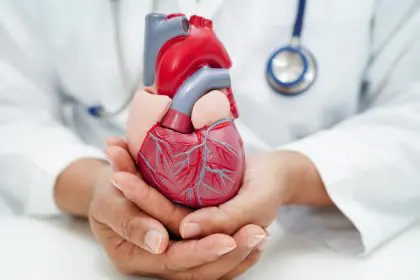The morning ritual of brewing a soothing cup of tea has taken a sinister turn. What once represented comfort and wellness now harbors an invisible menace that could be silently compromising your health.
The Invisible Invader in Your Favorite Brew
Recent groundbreaking research published in Chemosphere has uncovered a terrifying reality about tea consumption. The seemingly innocent tea bags we trust are actually delivery systems for billions of microscopic plastic particles that infiltrate our bodies with every peaceful sip.
A Scientific Breakthrough of Alarming Proportions
Environmental scientists have conducted a meticulous investigation into tea bag materials, revealing a contamination scenario more horrifying than anyone could have imagined. Different tea bag compositions tell a story of widespread plastic pollution that extends far beyond a single brand or manufacturing process.
The Microscopic Menace Explained
Microplastics represent a new frontier of environmental and health concerns. These minuscule plastic fragments, born from the degradation of larger plastic items, have become ubiquitous in our environment. Their size allows them to penetrate biological barriers in ways that challenge our understanding of human physiology.
Unraveling the Contamination Hierarchy
The research exposed a shocking spectrum of microplastic release across different tea bag materials. Polypropylene bags emerged as the most dangerous, releasing over 1.2 billion microplastic particles per milliliter of tea. Paper cellulose bags were not much better, shedding approximately 135 million particles, while mesh nylon bags contributed around 8.18 million particles to this microscopic invasion.
The Human Body Under Siege
Perhaps most alarming is the interaction between these microscopic invaders and human cells. Scientists discovered that human intestinal cells could not only encounter these particles but actually absorb them. This breakthrough raises critical questions about the long-term health implications of our daily tea consumption.
A Historical Context of Contamination
This discovery is not an isolated incident. Previous studies have consistently highlighted the pervasive nature of microplastics in our daily lives. A 2019 Canadian study found that certain tea bags could release an astounding 11.6 billion microplastics and 3.1 billion nanoplastics in a single cup of tea.
The Chemistry of Contamination
The brewing process itself becomes a catalyst for microplastic release. High temperatures, prolonged water exposure, and even simple actions like stirring can exponentially increase the number of plastic particles leached into the beverage. What was once a moment of relaxation has become a potential health hazard.
Beyond Tea: A Systemic Environmental Crisis
The tea bag microplastic issue represents a microcosm of a much larger environmental challenge. Plastics have infiltrated nearly every aspect of human consumption, from food packaging to daily household items, creating a complex web of potential health risks.
Expert Perspectives on the Invisible Threat
Environmental health experts like John Meeker from the University of Michigan have raised serious concerns. The potential for microscopic particles to penetrate human cells suggests a complex and potentially dangerous interaction with our biological systems that we are only beginning to understand.
A Holistic Approach to Contamination
The research challenges consumers to rethink their approach to beverage consumption. Experts recommend exploring alternative brewing methods that minimize plastic exposure. Loose-leaf tea prepared with stainless steel infusers, natural brewing materials, and conscientious consumer choices emerge as potential solutions to this microscopic invasion.
The Regulatory Landscape
Researchers like García-Rodríguez emphasize the urgent need for comprehensive regulation in the plastic industry. The goal extends beyond mere elimination of plastics, focusing instead on developing safer, more sustainable alternatives that protect human health and the environment.
A Moment of Reckoning
This scientific revelation represents a critical turning point in our understanding of environmental health risks. It challenges manufacturers to innovate, consumers to be vigilant, and society to reconsider our relationship with seemingly innocuous everyday items.
Empowerment Through Knowledge
Understanding the risks associated with microplastics is the first step toward meaningful change. Your daily cup of tea is no longer just a beverage—it’s a complex interaction of chemistry, environment, and personal health.
The journey to a healthier lifestyle begins with awareness, understanding, and conscious choices. The comforting ritual of tea drinking will never look the same again.














